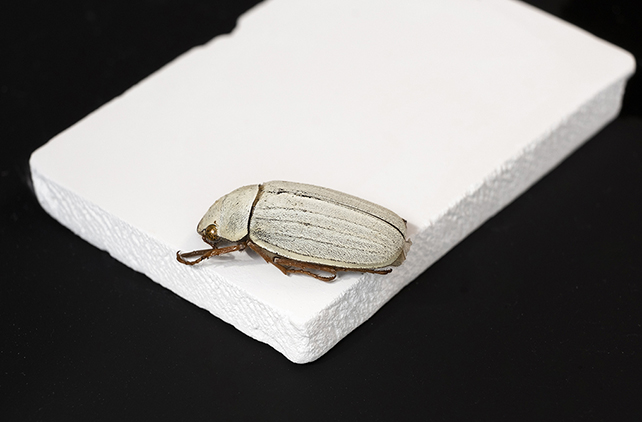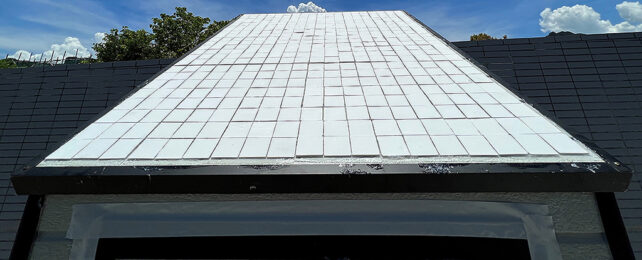With the world continuing to warm up, scientists are busy working on ways of cooling buildings without using vast amounts of energy – such as the record-breaking, ultra-white cooling ceramic composite that's been developed by researchers from the City University of Hong Kong.
It's what's known as a passive radiative cooling (PRC) material, and it can reach near-perfect 99.6 percent solar reflectivity, which is a record for this type of material.
It's relatively easy and cheap to make, durable, and versatile too. The idea is that it can be put on a building roof and walls in order to keep it cool all by itself.
The team behind the cooling ceramic says that the material is able to remove more than 130 watts of heat energy per square meter when the Sun is at its highest, amounting to a significant cooling effect.
"Our cooling ceramic achieves advanced optical properties and has robust applicability," says mechanical engineer Edwin Tso Chi-yan from the City University of Hong Kong.

This material is inspired by the Cyphochilus beetle, which has bright white scales covering its body. Like the beetle's scales, the ceramic makes use of a nanostructure that has pores similar in size to the various wavelengths of sunlight, meaning almost all of it is reflected back rather than absorbed.
At the same time, the ceramic achieves a high mid-infrared thermal emission of 96.5 percent, which means almost all of the heat being given off by a building can escape into the atmosphere. In short, the material scores highly for bouncing back sunlight, and allowing heat to escape, both of which contribute to passive cooling.
If all of this wasn't impressive enough, the material also overcomes some problems with existing PRC options, like poor weather resistance. In fact, it can withstand temperatures higher than 1,000 °C (1,832 °F). It has the potential to work on buildings in all weather conditions and in all climates, the researchers say.
A second study has also just been published, which details a cooling glass material that – like the ceramic – is highly efficient at both radiating heat and reflecting sunlight. Again, the durability and versatility of the new material is notable.
Ultimately, this reduces the need for air conditioners to be whirring throughout the day: by simply choosing the right materials for building surfaces, we can significantly cut down on energy usage and indoor heat. Work on these PRC materials continues.
"The beauty of the cooling ceramic is that it fulfils the requirements for both high-performance PRC and applications in real-life settings," says Tso.
The research has been published in Science.
